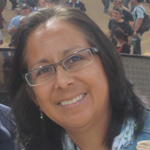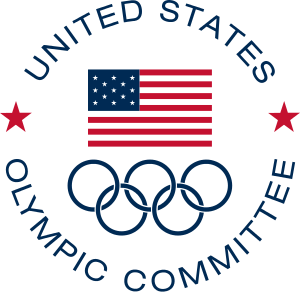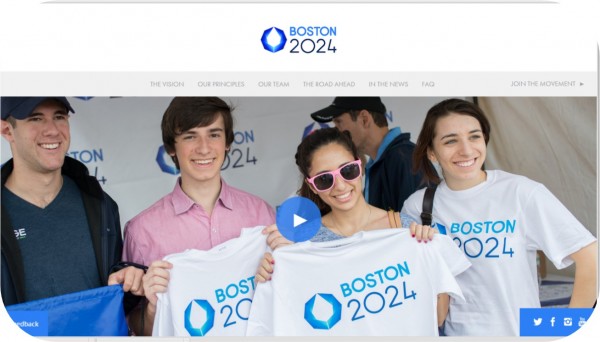There are some economic development gems in Connecticut that have somehow managed to largely escape public attention, even as their businesses have grown and employment levels increased. The companies were among 20 recipients at the annual Connecticut Economic Resource Center "Celebrate Connecticut" program, which recognizes "a broad range of individuals, companies and programs that have uniquely contributed to economic growth in Connecticut."
Recipients ranged from individuals, including Waterbury Mayor Neil O'Leary and North Haven First Selectman Michael Freda, to the Seymour Fish Bypass, Durham Agricultural Fair Association (the largest fair in North America managed entirely by unpaid volunteers), and Five Point Gallery in Torrington. But the bulk of the honorees were businesses - more small than large- with solid economic development stories to tell. Among them:
Tower Laboratories is a leading provider of effervescent products in the United States and supples to distributors worldwide. The company provides the fizz and bubbly sensation that gives products an edge, both in effectiveness and product appeal. Located in Centerbrook in Middlesex County, they develop and man;manufacture over-the-counter medications, prescription pharmaceuticals and personal care, beverage and household products.
Belimo Air Control USA employees 300 people in Danbury, and recently moved into newly constructed headquarters. Belino's products are essential components of the HVAC systems that keep indoor air comfortable, healthy, efficient and safe. Prominent customers are not only in the U.S, but worldwide.
Polamer Precision is an advanced contract aerospace manufacturing firm that has just completed a 152,000 square-foot facility in New Britain. The company will employ 83 highly skilled workers in this new facility, which will allow the company to increase its output and handle larger contracts. It will also feature the largest industrial solar power generation system in Connecticut.
 Recognized programs and organizations include the Rowley Spring Adult Education Diploma and Certificate Program, Billings Forge Community Works, Northwest Connecticut Manufacturer's Coalition, the Southeastern Connecticut Cultural Coalition, Fiddleheads Natural Food Co-op and the Putnam Business Association's First Fridays event.
Recognized programs and organizations include the Rowley Spring Adult Education Diploma and Certificate Program, Billings Forge Community Works, Northwest Connecticut Manufacturer's Coalition, the Southeastern Connecticut Cultural Coalition, Fiddleheads Natural Food Co-op and the Putnam Business Association's First Fridays event.
"These awards pay tribute to the hardworking people and successful programs and projects that are stimulating new jobs and investment in our economy,” said CERC President and CEO Robert Santy. “CERC is proud to recognize the 2014 honorees and the many successes making a positive impact on our business environment.” The awards were presented by state Economic and Community Development Commissioner Catherine Smith and Shelly Saczynski, Chair of the CERC Board.
Officials noted that a number of the businesses receiving awards began in local basements or with homegrown talent and have grown to successful enterprises. Danbury-based Mediassociates, for example, has seen 30 percent growth over the past 10-plus years and was highlighted as one of the top 3,000 fastest growing privately owned businesses in America by Inc. magazine. Datto, Inc., headquartered in Norwalk with nearly $50 million in revenue in 2013, and more than 300 employees, began in a basement as nothing more than an idea.
Among the innovative programs recognized was the Stamford 2030 district, a private-sector-led initiative of 23 property owners and managers and community and professional partners working toward the goal of cleaner and greener commercial and large-scale buildings. Stamford is the first city in New England and the tri-state region to establish a District, and one of only a handful nationwide. The initiative is led by Connecticut Fund for the Environment and the Business Council of Fairfield County.
The 20 award recipients, two in each of 10 regions across the state, were:
North Central
Billings Forge Community Works
CareCentrix
South Central
First Selectman Michael Freda
Alexion
Southeast
Fiddleheads Natural Food Co-op
Southeastern Connecticut Cultural Coalition
Middlesex
Tower Laboratories, Ltd.
Durham Agricultural Fair Association
Waterbury / Naugatuck
Waterbury Mayor Neil M. O’Leary
Seymour Fish Bypass (Paul Pawlak Fish Bypass)
West
Mediassociates
Belimo Air Control USA Inc.
Southwest
Datto, Inc.
Stamford 2030 District
Central
Polamer Precision
Rowley Spring Adult Education Diploma and Certificate Program
Northeast
Putnam Business Association First Friday's Event
Plainfield Renewable Energy – A Leidos Company
Northwest
Five Point Gallery
Northwest Connecticut Manufacturer's Coalition
In addition, CERC awarded its Customer Service Award,named for the late Connie Maffeo, to Donna Wertenbach, President and CEO of the Community Economic Development Fund.
Connecticut Economic Resource Center, Inc. is a nonprofit corporation and public-private partnership that provides economic development services consistent with state strategies, leveraging Connecticut’s unique advantages as a premier business location.

 The points on the map were organized by NTEE category. NTEE is the National Taxonomy of Exempt Entities, which categorizes nonprofits based on their social purpose.
The points on the map were organized by NTEE category. NTEE is the National Taxonomy of Exempt Entities, which categorizes nonprofits based on their social purpose. .
.

 nt and work closely with stakeholders in developing the conference, viewed as “an opportunity to look ahead to the issues that will help shape the landscape for older Americans for the next decade.”
nt and work closely with stakeholders in developing the conference, viewed as “an opportunity to look ahead to the issues that will help shape the landscape for older Americans for the next decade.”
 cut
cut
 e filled out by your physician when a concussion occurs, our procedures for concussion management, and our Return to Play protocol that will be followed by all athletes before returning to competition after sustaining a concussion.”
e filled out by your physician when a concussion occurs, our procedures for concussion management, and our Return to Play protocol that will be followed by all athletes before returning to competition after sustaining a concussion.”
 ent where people with autism or sensory needs, along with their families, can enjoy coming to the theatre together and will feel comfortable, supported and free to be themselves.”
ent where people with autism or sensory needs, along with their families, can enjoy coming to the theatre together and will feel comfortable, supported and free to be themselves.”

 sness” category.
sness” category.

 the U.S. Championships, which will also be held in different cities. The men’s championships will be held in Hartford, June 3-5, 2016. The women will also be in town, competing in the Secret Classic – a major pre-Olympic event. The women will move on to their national championships three weeks later in St. Louis.
the U.S. Championships, which will also be held in different cities. The men’s championships will be held in Hartford, June 3-5, 2016. The women will also be in town, competing in the Secret Classic – a major pre-Olympic event. The women will move on to their national championships three weeks later in St. Louis.


 Recognized programs and organizations include the Rowley Spring Adult Education Diploma and Certificate Program, Billings Forge Community Works, Northwest Connecticut Manufacturer's Coalition, the Southeastern Connecticut Cultural Coalition, Fiddleheads Natural Food Co-op and the Putnam Business Association's First Fridays event.
Recognized programs and organizations include the Rowley Spring Adult Education Diploma and Certificate Program, Billings Forge Community Works, Northwest Connecticut Manufacturer's Coalition, the Southeastern Connecticut Cultural Coalition, Fiddleheads Natural Food Co-op and the Putnam Business Association's First Fridays event.

 rt this new chapter,” said co-founder and CEO Kate Pipa, who lives in Shelton. “And we are excited to bring kids a new box each month of hands-on fun that also doubles as a learning opportunity and is making social impact for the kids and for our partner organizations.”
rt this new chapter,” said co-founder and CEO Kate Pipa, who lives in Shelton. “And we are excited to bring kids a new box each month of hands-on fun that also doubles as a learning opportunity and is making social impact for the kids and for our partner organizations.”
 “Many preliminary competition events would need to take place outside of the main Olympic Park areas so events may occur as far away as Connecticut. This also is an opportunity for more people to get involved with the Olympic Spirit,” Garcia adds.
“Many preliminary competition events would need to take place outside of the main Olympic Park areas so events may occur as far away as Connecticut. This also is an opportunity for more people to get involved with the Olympic Spirit,” Garcia adds.


 An Olympic games in Boston would utilize existing sports venues of both professional teams and area colleges, which could reduce potential costs. Infrastructure improvements, such as in transportation, are already on the drawing board, and could accelerate with a Boston bid.
An Olympic games in Boston would utilize existing sports venues of both professional teams and area colleges, which could reduce potential costs. Infrastructure improvements, such as in transportation, are already on the drawing board, and could accelerate with a Boston bid.

 Making the grade are Bridgeport, Hartford, and New Haven. Their respective round one opponents make the Connecticut cities strong underdogs in need of a sizable population surge. Bridgeport goes up against San Francisco, Hartford faces Baltimore, and New Haven is up against Portland. (No, not Portland, Connecticut.)
Making the grade are Bridgeport, Hartford, and New Haven. Their respective round one opponents make the Connecticut cities strong underdogs in need of a sizable population surge. Bridgeport goes up against San Francisco, Hartford faces Baltimore, and New Haven is up against Portland. (No, not Portland, Connecticut.) one of two versions of the game, geographic level: metro areas or states. Then they click on the name of the city in each match-up that you think has the larger population. Green shows a correct answer, red indicates an incorrect answer. Players are urged to “see how close you can come to a perfect score of 63” and then asked to “mouse-over results to view the most current population estimates for each pair.”
one of two versions of the game, geographic level: metro areas or states. Then they click on the name of the city in each match-up that you think has the larger population. Green shows a correct answer, red indicates an incorrect answer. Players are urged to “see how close you can come to a perfect score of 63” and then asked to “mouse-over results to view the most current population estimates for each pair.”



























